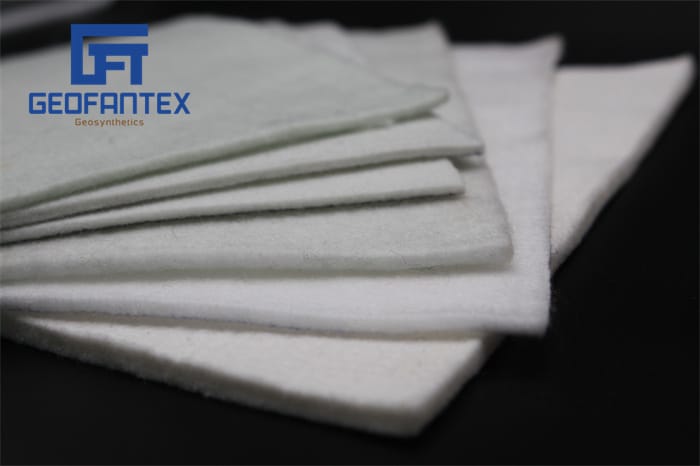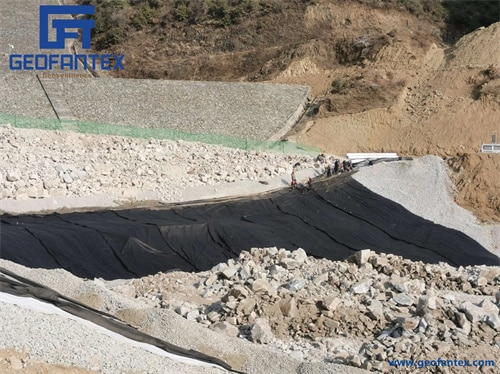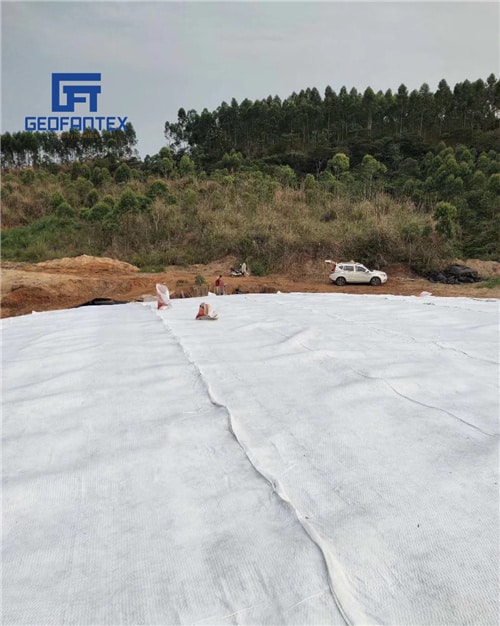Do you want to learn more about geotextile fabrics? Find answers to your questions about the differences between woven and non woven geotextile fabrics and about nonwoven permeable geotextile fabrics here. Learn more about nonwoven filter fabric functions, differences between woven geotextile vs nonwoven, and more info about relevant uses of nonwoven geo fabric. Geotextile fabrics are available by the roll or pallet. We provide top quality geotextile fabrics and customer service, as well as on-time delivery.
1. What is geotextile fabric?
Geotextiles are flexible fabrics, normally made from polypropylene based materials for durability. Depending on the style and type, they have different degrees of of transmissivity and permittivity (how quickly water passes through the fabric). filter fabrics for drainage. and for permanent control and soil stabilization, as well as erosion control.

2. Geotextiles come in woven and nonwoven, how are they different?
Geotextiles are classified as either woven or nonwoven. As the names indicate, the basic difference is how they’re manufactured. Nonwoven geotextiles are manufactured with a needle-punch process, using barbed needles to create a felt-like permeable geotextile fabric. Because of the random pattern used in their manufacture, nonwoven geotextiles have greater strength than woven fabric. Woven geotextiles are woven together with industrial looms in a consistently applied pattern. Each type of geotextile has its own benefits and uses. Each one has merit, depending on project requirements for strength, durability, and drainage. For assistance in determining the type of filter fabric you need for your drainage requirements of your project, contact us.
3. How can you tell if the geotextile filter fabric is nonwoven ?
Nonwoven geotextile fabrics are a type of synthetic permeable geotextile fabric created by needle-punching the fibers during manufacture. It is easily recognized by it’s felt-like appearance and texture. While it has many uses, non woven geotextiles are most commonly used for filtration drainage or separation in construction and erosion control projects.
4. How is nonwoven geo fabric used?
Since they are permeable, nonwoven geotextiles are often used as filter fabrics for drainage in construction or erosion control projects. Nonwovens function well in separating layers in construction and paving projects, under playgrounds, and more. Another popular use for these geotextiles is overlay for asphalt projects, as it expands the life of pavement. Other geotextile uses include:
- Asphalt Overlay
- Subsurface Drainage
- Landscape Fabric & Weed Barrier
- Pipe Wrap
- Rip Rap Underlay
- Separation
- French Drains
- Filter Fabric
- Geomembrane Cushion
5. Why do the measurements of geotextiles make a difference?
- Weight: The number of ounces per square yard you are getting This is important for determining which weight you need for your particular job. We have light-weight, medium weight, and heavy weight available.
- Grab Tensile Strength and Elongation: Indicate the breaking load of the fabric, which makes a difference depending on what your application is.
- Trapezoidal Tear Strength & CBR Puncture Resistance: Are two different methods of measurements of the strength of the fabric while under tension. You will need to know how much strength you will need for your project or application.
- Permittivity & Permeability: are both means of measuring the rate of water flow of the through the fabric. so it makes a big impact depending on if you are using it for landscaping, drainage, as underlayment, or as a geo-membrane cushion.
- AOS (Apparent Opening Size): Fabrics with a higher percentage of open area ,or the size of the weave opening, experience less clogging.

6. What do the different fabric weights mean?
Nonwoven geotextiles are generally categorized as light weight, medium weight, and heavy weight, indicating the thickness of the fabric, strength, and drainage capabilities. For example, light weight nonwoven geotextile fabric is more permeable and has high flow through rates. However, it isn’t as rugged as heavier weight fabric. Heavy weight non woven geotextile fabric has a slower drainage rate, but greater strength and provides increased support for soil stabilization.
7. What is lightweight nonwoven fabric and how are they used?
Lightweight non woven permeable geotextile fabrics range from 3 ounces to 5 ounces. They offer high flow through rates, and are best used for projects that need to facilitate a high volume of drainage. An example of our lightest filter fabric is our Mirafi® Mscape. This lightweight landscape fabric is primarily used for soil separation and drainage. Designed for more permeability, it has a higher water flow rate than heavier fabrics. This geo filter fabric is especially successful at inhibiting existing weed growth, and suppressing new weed growth.

Light weight non-woven geotextiles are available in these fabric weights:
- 3.1 Ounce
- 3.5 Ounce
- 4.0 Ounce
- 4.5 Ounce
8. What are medium weight nonwoven geotextile fabrics and what are their uses?
Medium weight non woven geotextile fabrics range from 6 ounces to 8 ounces. They offer medium flow through rates, and are higher than lightweight fabrics in strength and durability. Mirafi® N-Series one of our mid-weight nonwovens, are used in transportation, building site, and water infrastructure projects for soil separation and drainage. This filter fabric has excellent water flow rates, high soil interaction and durability, allowing superior soil particle retention. Medium weight nonwoven is the most popularly requested all-purpose options. Use them for filtration, soil stabilization, aggregate separation, and erosion control.
Medium weight non-woven geotextiles are available in these fabric weights:
- 6 Ounce
- 8 Ounce
9. What are heavy-weight non-woven geotextiles and when would you use them?
Heavy weight non woven permeable filter fabrics range from 10 ounces to 20 ounces, and offer the maximum amount of strength and soil stabilization. Our Mirafi® S-Series is one of our heaviest filtration fabric. This filter fabric provides exceptional durability and high puncture resistance, permittivity, and transmissivity. The S-Series delivers excellent strength and abrasion resistance, while withstanding installation and application stresses.
Use our heavy weight nonwovens for projects such as: rip rap, high aggregate separation, filtration, permanent erosion control, and road stabilization. Heavy weight non-woven geotextiles are available in these fabric weights:
- 10 Ounce
- 12 Ounce
- 16 Ounce
10. Does non-woven geo react to the pH of the soil around it? Will it degrade if exposed to sunlight?
Yes, we carry rot resistant and UV stabilized geotextile fabrics. Our Mirafi® N-Series is designed for chemical stability in aggressive environments. Be sure to share the requirements of your project or jobsite and the way you plan to use your nonwoven filter fabric. This will help us make sure we provide the right fabric for your specific project.
11. How do nonwoven geotextiles come and are there different ways to order them?
Our nonwoven drainage fabrics typically come in rolls available in either 12.5’ W x 360’ L or 15’ W x 300’ L. Each weight of fabric has different properties, including the choice of roll sizes available. Please check our geotextiles specifications page for the specific fabric that you’re considering, or contact us for assistance. Our minimum order is one roll however, you can order as few or as many as you need! Multiple rolls can be connected together during installation to meet the required length and width of your location.

12. Do you sell non woven geotextile fabric rolls in bulk?
Yes! We offer the fabric in bulk, and can work with you for a bulk rate depending on your order quantity. Contact us for details.
Have more questions about Non Woven Geotextile?
